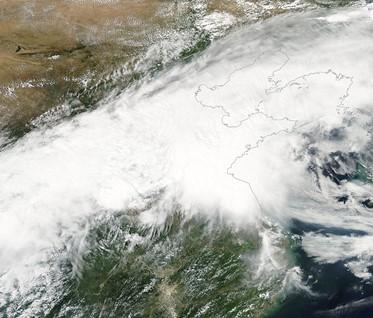Generating Robust Precipitation Projections from Climate Models
Credible projections of future precipitation are critical to water resource planning, but current climate models show large uncertainties in projecting future climate change. Scientists developed new metrics to identify the models that best represent precipitation and its relationship with large-scale circulation. Applying these metrics to East Asian summer monsoon precipitation, they found that a subset of models from a large multi-model ensemble projected more consistent future precipitation changes. More specifically, these “skillful” models projected a larger and more statistically significant increasing trend for East Asian summer precipitation than the mean trend projected by all models.
Uncertainty in climate model projections of regional precipitation changes has hindered their use in climate impact assessment and climate adaptation planning. Climate models exhibit wide-ranging skill at simulating different climate variables, but it is unclear which of these variables must be skillfully simulated to generate credible projections of future climate change. This study developed a two-dimensional metric for ranking models and found that selecting models deemed skillful by the metric decreased uncertainty in future projections of East Asian summer monsoon precipitation. This demonstrates the importance of metrics and motivates the further development of metrics that can constrain regional climate projections for societal use.
Precipitation is a fundamental driver of land surface hydrology and water resources. Therefore, quantifying its response to future warming is important. Current precipitation projections show large biases and uncertainties across models, making selecting models with good performance necessary to obtain more reliable projections.
Traditional model evaluation metrics largely focus on simulations of precipitation characteristics. However, skillful precipitation simulation may be achieved for the wrong reasons, such as error cancellations. In this study, researchers developed a novel metric that considers both simulated precipitation and its physical relationship with large-scale environments, with a focus on the East Asian summer monsoon. This metric is applied to the Coupled Model Intercomparison Project Phase 5 models to classify the 31 models into top-, middle-, and bottom-performing groups. Future precipitation trends in the top-performing group are more consistent and similar across individual models, while the middle and bottom groups projected significantly more diverse or opposite trends. Compared to the projections from all the models, the top-performing group projected a higher precipitation increase in East Asia under future warming. Applying the evaluation framework developed in this study to other geographic regions may also reduce uncertainties in regional precipitation projections.

